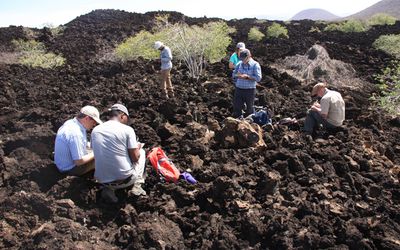The African rift valley is one of the most fascinating geological wonders, where volcanism, earthquakes and fracturing of the Earth's surface are the expressions of the enormous forces able to break continental plates and form new oceans. Despite these ideal conditions, there are portions of the East African rift that almost completely lack information on the evolution and style of volcanism and tectonic deformation. In the frame of a project funded by the prestigious National Geographic Society, a group of researchers from the Institute of Geosciences and Earth Resources of the National Research Council of Italy, the University of Florence, and other international institutions has recently undergone a study of one of these poorly understood areas, the Ririba rift. This sector, located at the border between Ethiopia and Kenya, is of special interest because it is commonly believed to represent the southernmost, youngest and less-developed sector of the Ethiopian Rift valley in a 300km-wide complex region of diffuse deformation resulting from the interaction between the Ethiopian and Kenya Rifts. The recent volcano-tectonic activity in the area is testified by occurrence of long, narrow fault-controlled tectonic depressions and associated widespread volcanism, expressed by numerous lava flows and impressive explosive volcanic craters (maars). The volcanic products are exceptional in that they host abundant xenoliths, fragments of deep crustal and mantle rocks brought to the surface from depths up to 80 km. The project funded by National Geographic involved a fieldwork campaign, with collection of field data and analysis of the widespread volcanism at selected key locations. In particular, researchers have collected samples of selected basaltic lava flows and pyroclastic deposits associated with explosive volcanic craters common in the area. Radiometric dating of the collected samples will provide age constraints on the volcanic evolution and, together with other new data currently under analysis, they will provide new significant insights into the timing, distribution and characteristics of tectonic and volcanic activity at the southernmost tip of the Ethiopian rift valley. This will also be useful to place fundamental new constraints on how major sections of continental rifts (in this case the Ethiopian and Kenyan rifts) propagate, interact and link.
Giacomo Corti, Istituto di Geoscienze e Georisorse, Consiglio Nazionale delle Ricerche (giacomo.corti(at)igg.cnr.it)
